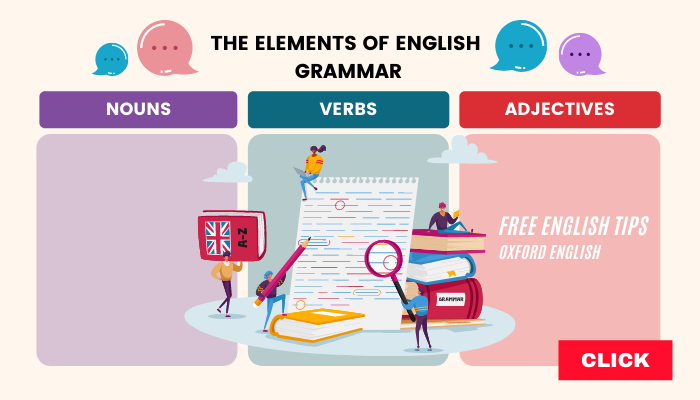


Although there are hundreds of different grammar rules in English, there are actually only 5 fundamental principles students have to understand in order to be able to properly communicate.
Since these elements apply regardless of whether you're speaking or writing English, our students should make sure they fully understand them before proceeding to the more specialized rules in English grammar.
In an effort to help you master English grammar faster, we have prepared a brief guide on the 5 fundamental grammar elements that make up spoken and written speech. Read on to learn more.
What are the five elements of grammar?
The following 5 principles form the basic framework you’ll need to become familiar with in order to speak coherent and grammatically-correct English. They are the foundation on which the other rules of English are built.
These 5 key principles of English grammar are:
1. Word order
As an analytic language, English uses word order to determine the relationship between different words. In a basic declarative statement, the subject should always come first, the verb-second, and the objects and adverbial phrases (if any) third.
Examples:
Changing this basic order changes the meaning of the sentences:
2. Punctuation
In written English, punctuation is used to signify pauses, intonation, and stress words. These punctuation marks are commas, periods, question marks, exclamation points, semicolons, colons, dashes, hyphens, brackets, braces, parentheses, apostrophes, ellipsis, and quotation marks.
Punctuation can completely alter the meaning of a sentence, as in these examples:
3. Tense and aspect
Tenses signify whether a statement refers to the present, the past, or the future by applying parameters to verbs. Likewise, aspect shows whether a statement refers to one single instant action, a regular or repeated action, or an ongoing or progressive action or state.
Here's how tenses can completely change a sentence:
4. Determiners
Since nouns can rarely stand on their own without prior context, determiners such as "which", "how many", "what", "my", and so on are needed to give them meaning. Using determiners correctly is essential in order to form meaningful questions or statements.
Here are some examples of determiners in action:
5. Connectors
As their name suggests, connectors "connect" phrases, words, or clauses to one another. They can express subordination (if, who, that, when, because, although), coordination (but, and, yet, nor), or correlation (either, or, both, and) between the units they link.
Examples of subordination:
Examples of correlation:
Examples of coordination:






















